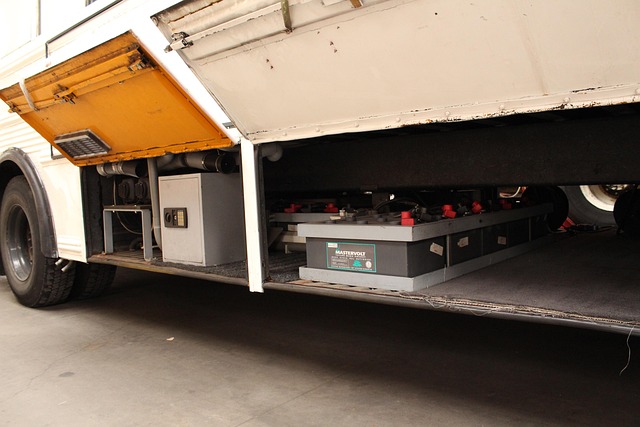Registering a car in California involves understanding eligibility requirements, gathering essential documents, and successfully completing several steps. This comprehensive guide walks you through the process, focusing on key aspects like DMV VIN verification. By following these detailed instructions, you’ll ensure a smooth registration experience, ultimately securing your vehicle’s legal status in the Golden State.
- Understand Eligibility Requirements for Car Registration in California
- Gather Necessary Documents for Your Vehicle
- Perform DMV VIN Verification Step-by-Step
- Complete and Submit Application Forms Accurately
- Pay California Car Registration Fees and Get Your Plate
Understand Eligibility Requirements for Car Registration in California

Before you begin the registration process, it’s crucial to understand the eligibility requirements for car registration in California. To register your vehicle, you must first ensure that your car meets all state and federal safety standards. The California Department of Motor Vehicles (DMV) conducts a VIN (Vehicle Identification Number) verification process, which includes a vehicle history report check. This step is essential to determine if the car has been reported stolen or if it has outstanding recalls or repairs needed.
Additionally, your vehicle must have valid registration plates and insurance coverage. The DMV offers various methods for registration, including in-person visits, online services, and mobile vin verification using a certified mobile vin inspector. Utilizing a mobile vin verifier can be convenient, as it allows you to complete the initial inspection from the comfort of your location, ensuring a smoother registration experience.
Gather Necessary Documents for Your Vehicle

Before registering your car in California, you’ll need to gather several essential documents. This process is designed to ensure that vehicle owners provide accurate information and meet all legal requirements. One critical step involves obtaining a Vehicle Identification Number (VIN) verification. The California Department of Motor Vehicles (DMV) requires this verification as part of the registration process. You can complete this by providing the DMV with your vehicle’s unique VIN, which is typically located on the vehicle identification plate or in the driver’s side door jamb.
Additionally, you’ll need to have all necessary paperwork, such as proof of ownership, insurance documents, and current maintenance records. Some California residents choose to avail of mobile vin verification services, using a mobile vin verifier for convenience. This involves an authorized professional visiting your location to conduct the VIN inspection and transmit the data directly to the DMV, streamlining the registration process even further. Ensure that all documents are up-to-date and accurate to avoid delays or complications during registration.
Perform DMV VIN Verification Step-by-Step

Performing a DMV VIN verification is a crucial step in registering your car in California. Here’s a straightforward guide to help you navigate this process. First, gather all necessary documents, including your vehicle’s registration certificate from the previous state (if applicable), proof of insurance, and valid driver’s license. Then, visit the California DMV website or head directly to your nearest DMV office. On their website, look for the option related to “VIN Verification” or “Vehicle Inspection.”
Next, you’ll need to provide your vehicle’s unique identifier—the Vehicle Identification Number (VIN). This 17-character code can be found on the driver’s side of the dashboard, usually near the window. After entering the VIN, follow the on-screen prompts. These may include verifying your identity and providing details about your car, like make, model, and year. For a more convenient option, consider using a mobile vin verifier or conducting a mobile vin inspection to complete this step from the comfort of your home or even while you’re on the go.
Complete and Submit Application Forms Accurately

When registering your car in California, accuracy is key. You’ll need to complete and submit several application forms, including the Application for Title and Registration (Form DV-140). Make sure all the information is correct, from your personal details to those of the vehicle, such as its make, model, year, and Vehicle Identification Number (VIN). An important step in this process is the DMV VIN verification, which ensures the accuracy of the VIN on your car’s title.
For a hassle-free registration, double-check all data before submitting. In California, using a mobile vin inspection service can help streamline the process. These services offer convenient and accurate VIN inspections that can be done from the comfort of your home or even while you’re at a DMV office. They provide real-time updates on vehicle history, helping to avoid any errors during registration.
Pay California Car Registration Fees and Get Your Plate

After successfully completing your vehicle’s registration application at the California DMV, the next step is to pay the required fees and obtain your license plate. This process involves a thorough DMV vin verification to ensure the vehicle’s identity and compliance with state standards. You’ll need to pay the registration fee, which varies based on your vehicle type and age. Typically, this can be done online, over the phone, or at a local DMV office.
Once the fees are settled, you can request your license plate. California offers both standard and custom plates. If you prefer a quicker process, consider using a mobile vin verifier to conduct the necessary inspection remotely. This modern approach allows for convenience while ensuring your vehicle’s registration is officially recognized with a unique license plate.
Registering a car in California involves understanding eligibility requirements, gathering essential documents, completing a DMV VIN verification process, accurately submitting application forms, and paying relevant fees. By adhering to these steps and ensuring all necessary paperwork is in order, you can smoothly navigate the car registration process. Remember, proper documentation and adherence to state regulations are key to a successful and hassle-free registration experience.
